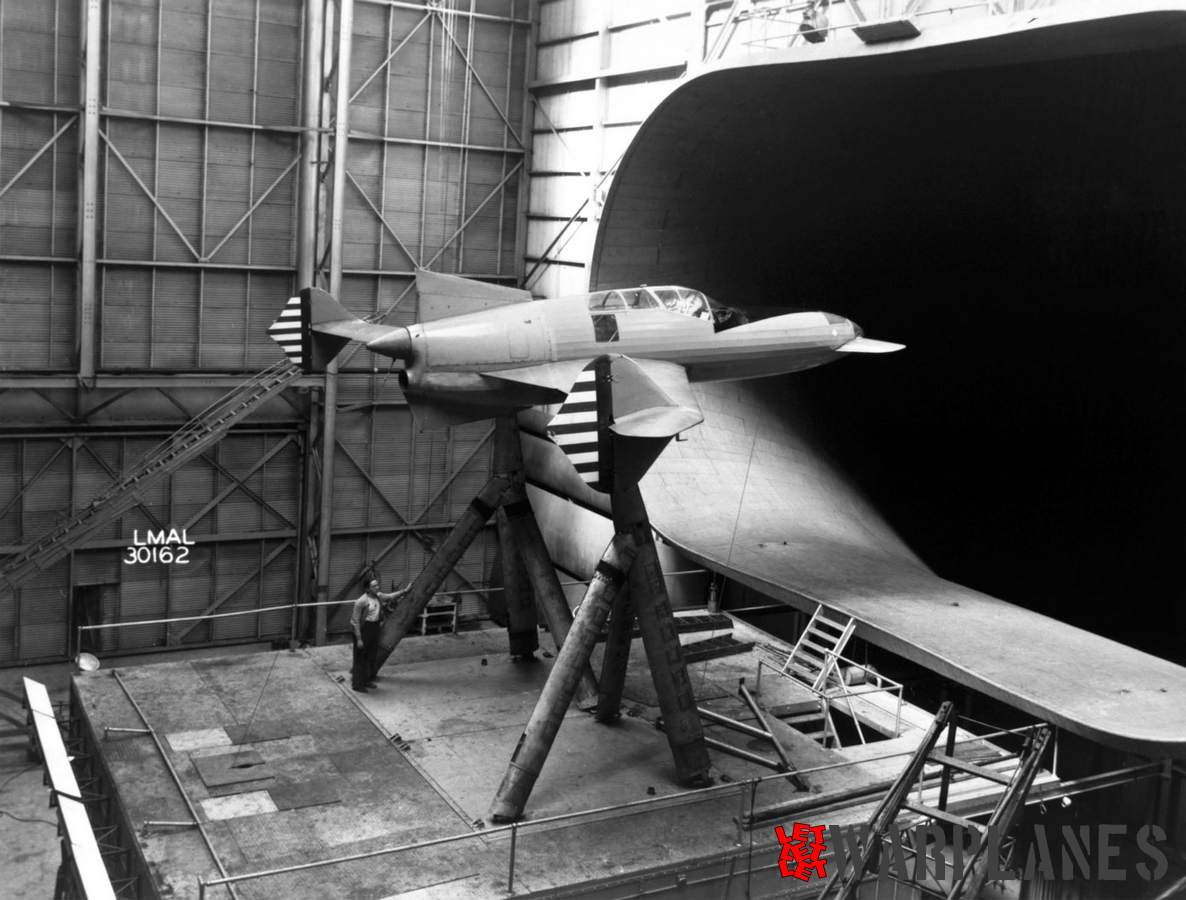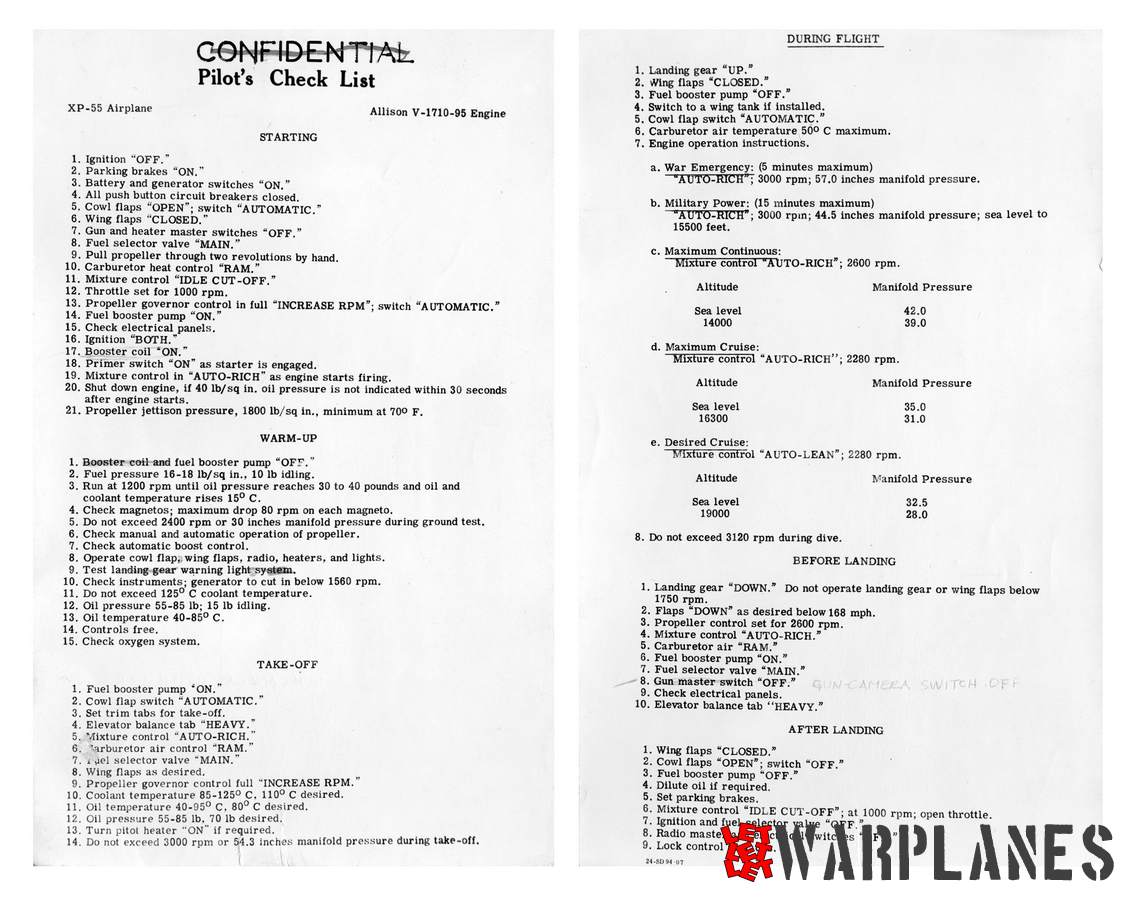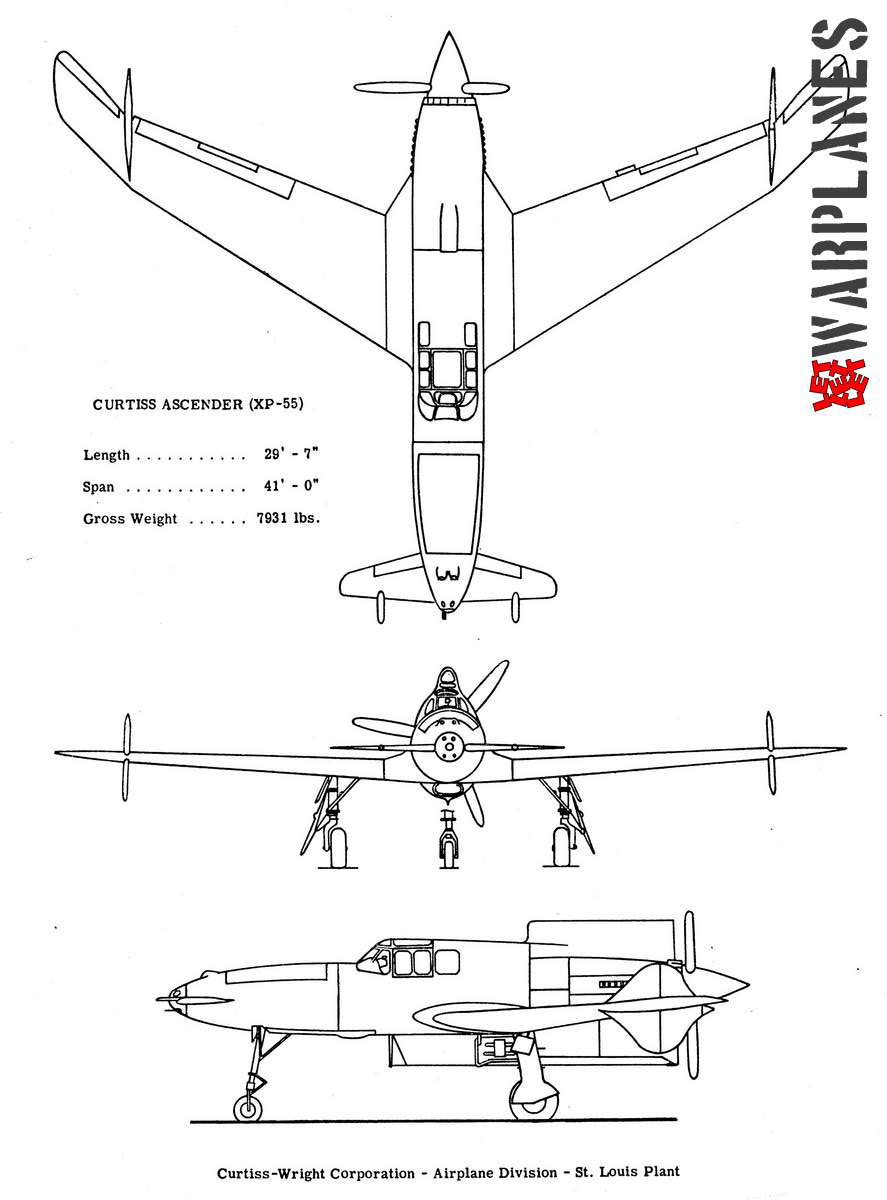Curtiss XP-55 Ascender

The XP55, Curtiss Model 24, was the second type selected by the Army for the 1939 specifications for unorthodox designs. A request for specific engineering was received by Curtiss on June 22, 1940. Chief designer Don Berlin studied all possibilities for this R-40C design. Eventually, he selected a canard layout with a tail-mounted engine driving a pusher propeller and an armament concentrated in the nose. Just as some competing designs from Northrop and Consolidated Vultee, the engine selected for the new Curtiss design was the experimental Pratt and Whitney X-1800 liquid-cooled sleeve-valve engine.

The design received the Curtiss type designation CW-24; the A.A.C. fighter designation was XP-55. Results of wind tunnel testing did not satisfy the Army, so Curtiss constructed a full size flying model to evaluate radical layout. The model was successfully flown 169 times at Muroc, California. The flight tests several areas requiring improvements, mainly in vertical keel area, but the Army was satisfied with potential of the design and approved construction of three XP55′ s on July 10, 1942. It was fitted with an air-cooled Menasco C6085 275 hp in-line engine driving a two-bladed fixed pitch wooden propeller. This CW-24B had wooden wings and a fuselage made of welded steel tube covered with fabric. Test pilot Harvey Grey made the first flight with the CW-24B on 9 November 1941. It was shipped to Muroc Dry Lake, California for an extensive test program. Here, it was flown from 1 December 1941 until May 1942.

The CW-24B handled as expected although a number of modifications were made during the test program. After termination of the flight testing at Muroc, it was shipped to Langley AFB where the NACA laboratories investigated it in their wind-tunnel. Originally use the Pratt & Whitney X1800 engine, an Allison V1710F16 was substituted when the P & cancelled. Because of the pusher arrangement of the engine, it was necessary to devise a means the propeller in the event of an emergency bailout. The first XP55, now named Ascender, was ready for flight testing on July 13, 1943. The initial was so long that the nose elevator area was increased fifteen percent for subsequent flights, and were trimmed upward when the flaps were lowered.

Meanwhile, Curtiss had received a contract for the construction of three XP-55 prototypes. The assigned serial numbers for these planes were 42-78845, 42-78846 and 42-78847 and it was named the Ascender. Pratt and Whitney had terminated further development on the X-1800 engine, so Curtiss had to find an alternative. Eventually, the Allison V-1710 was selected. Although this engine had the same weight of the X-1800, it produced only half the power. This resulted for the XP-55 in far less performances as originally planned! Test pilot Harvey Grey made the maiden flight with the first prototype on 19 July 1943 from the Army’s Scott Field near the Curtiss St. Louis plant. After a very long run, he finally became airborne.

In general, the XP-55 flew with reasonable success, although it had some inherent stability problems of the canard configuration. Because of the plane’s relatively high wing loading, stall-characteristics were quite vicious and without any previous warning, resulting in much loss of altitude. The first prototype no. 42-78845 did not carry any armament. The second machine had provision for the intended machine guns, but they were never fitted and the gun openings were faired over.

On 15 November 1943 Grey had to leave the first prototype by parachute when he was unable to recover from a spin after stalling trials. After this accident, stalling the plane was prohibited below 6069 m. In spite of this, also the third prototype, no. 42-78847, crashed at Wright field under similar conditions. This third machine was the only one carrying full armament for gunnery tests. The second Ascender was completion and flight testing was resumed when it was available, but stalls were restricted. The third XP55 did incorporate the necessary revisions. These extended wingtips with small additional “trailerons” outboard of the wing mounted rudders.

A number of modifications were made to the second and third prototypes (which had their maiden flights on January 9 and April 25, 1944) aimed at improving directional stability and the efficacy of the elevators but the aircraft was not only slower than design specification, the engine also tended to overheat and handled badly at low speeds and during landing. But lingering problems, including generally poor stability, remained unsolved when the third XP55 was returned to Wright Field, Ohio, for further tests continuing into 1945. On 27 May 1945, at a Wright Field air show and bond rally attracting a crowd of more than 100,000, the third XP55 took off to give a public flying display.

Captain William C. Glascow flew across the field leading five other fighters in formation, with a Lockheed P-38 Lightning and a North American P-51 Mustang on its sides, made one roll before the crowd, began another, and suddenly dived into the ground inverted. The pilot was thrown from the wreckage but suffered mortal injuries, while a nearby motorist was also killed (various sources claimed up to four civilians killed)

The Ascender displayed satisfactory handling characteristics during normal flight, but at low speeds, it became overly sensitive; and, even after modifications, the stall was quite an experience. Engine cooling was inadequate and some stability problems remained, when the Army decided the unorthodox little fighter would not be an effective weapon. Because the XP-55 failed to meet its expected flight performances, the whole program was terminated.

Technical details:
Power plant: Allison V-1710-95 liquid-cooled in-line engine of 1275 hp
Sizes: wingspan 12.36 m
length 9.01 m
height 3.53 m
wing area 19.41 m2
Weights: empty weight 2415 kg
loaded weight 3497 kg
Performances: max. speed 627 km/h at 5863 m
service ceiling 10,546 m
range 1021 km
Armament: four 12.7 mm machine guns in the nose, each gun having 250 rounds
Accommodation: one pilot
Srećko Bradić






